
RBH Home
Maps & Travels
Articles
Legends
Towns & Villages
Castles & Houses
Churches
Biographies
Gentry
Family History
Odds & Ends
Mail David
Lambourn Church
Monuments to John Estbury, 1507
Centre of Holy Trinity Chapel
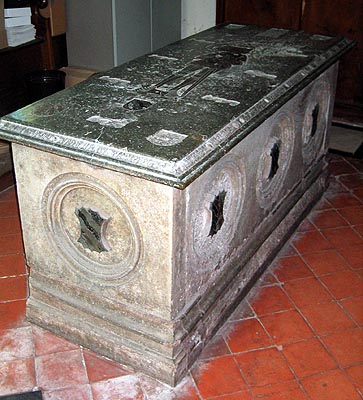
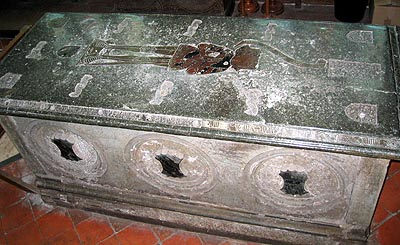
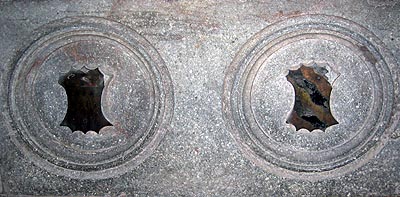
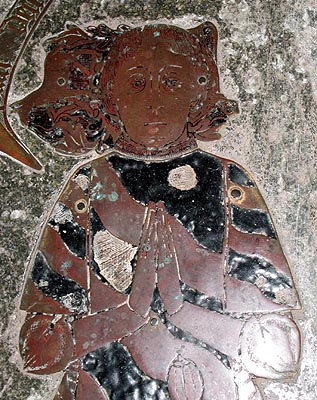
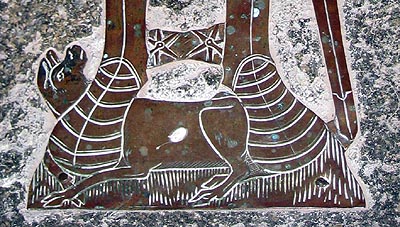
In 1501, John Estbury was granted a license, from the King, to found a perpetual chantry and an almshouse for ten poor men in Lambourn. In addition to the duties of the chantry the chaplain, whose stipend was derived from John Estbury's manor and advowson of Whatcombe, was to provide instruction in a free grammar-school in the house adjoining the churchyard. The poor men of the almshouse were commanded to attend service each day in the chapel and it was still used by the almsmen well into the 1930s.
John Estbury did not long survive his charitable deed. In 1507, he made his will in which he described himself as of Letcombe Regis. One of his executors was to be ‘Maister William Porter, Wardeyn of the newe Collage in Oxford,' to whom he had committed the supervision of the chantry priest.
The tomb which John Estbury had raised for himself is in the centre of his foundation, the Holy Trinity Chapel in Lambourn Church. It is of gray marble, the sides adorned with shields with armorial bearings, with a representation of the founder on a flat brass on the top. On a scroll issuing from the mouth of the figure are these words: 'Pater de Celis, Deus, miserere nobis.' The shape of this scroll doubtless gave rise to the popular idea among Lambourn people as to the way in which John Estbury met his death. The story is given by Mr. Murray: "He was killed by a worm dropping into his mouth while he was asleep in an arbour. His housekeeper tried to decoy it out with a basin of milk, but in her haste to get it out it stung his lip, from the effects of which he died."
The inscription round the ledge of the tomb is unfortunately very imperfect. When Ashmole visited the church in the seventeenth century, he found more of it than now remains. He quotes it as follows:
Hic jacet Johannes Estbury, Armiger, Fundator istius nove capelle et cantarie Ac consanguineus et heres Johannis. . . . Predict. ac fundator hujus veteris capelle qui obiit . . . vizi. Cujus anime propicietur Deus. Amen.
Between the words of the inscription two dogs of heavy build are represented hunting a hare; a sheep is also introduced. The terminal figure of the date proves clearly that this is the tomb of the founder of the almshouse, and not of his father, as has often been stated.
Ashmole observed "in the East window [of this chapel], painted on the Glass, the Picture of the Founder kneeling, having only a winding Sheet over him, and this Scrowl issuing out of his mouth: "Mundi Salvator, sis michi propitiator."" A visitor to the church at the beginning of the 19th century tells us that "in the windows are still some remains of the most highly-coloured and delicately-painted glass"; but, alas ! these remains have been swept away, and all three windows are filled with Victorian stained glass by Williment.
John Estbury's widow, Elizabeth, married, in 1512 or 1513, one William Swayne. She presented chaplains in 1512, 1514, and 1534. Their daughter, Agnes, married John Latton, Esquire of Chilton, which family quartered the arms of Estbury; but they had no son, and we hear no more of the Estburys in connection with Lambourn Church.
Ashmole, who drew the monument, shows, on its south side, a shield (now missing) giving Estbury impaling Ermine three fleurs-de-lys and a bordure [gules] (for Fabian) which he also shows as being in a window in the manor halls of Childrey and East Shefford. The arms of Fabian are also found in Childrey Church. Joan, daughter of Edward Fabian, married, as her third husband, John Estbury of Letcombe Regis, some time after 1464 in which year her second husband, John Fettiplace of East Shefford, died.
Description edited
from John Footman's 'History of Lambourn Church' (1894)
& P.S. Spokes' 'Coats of Arms in Berkshire Churches: Lambourn' (1935)
